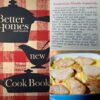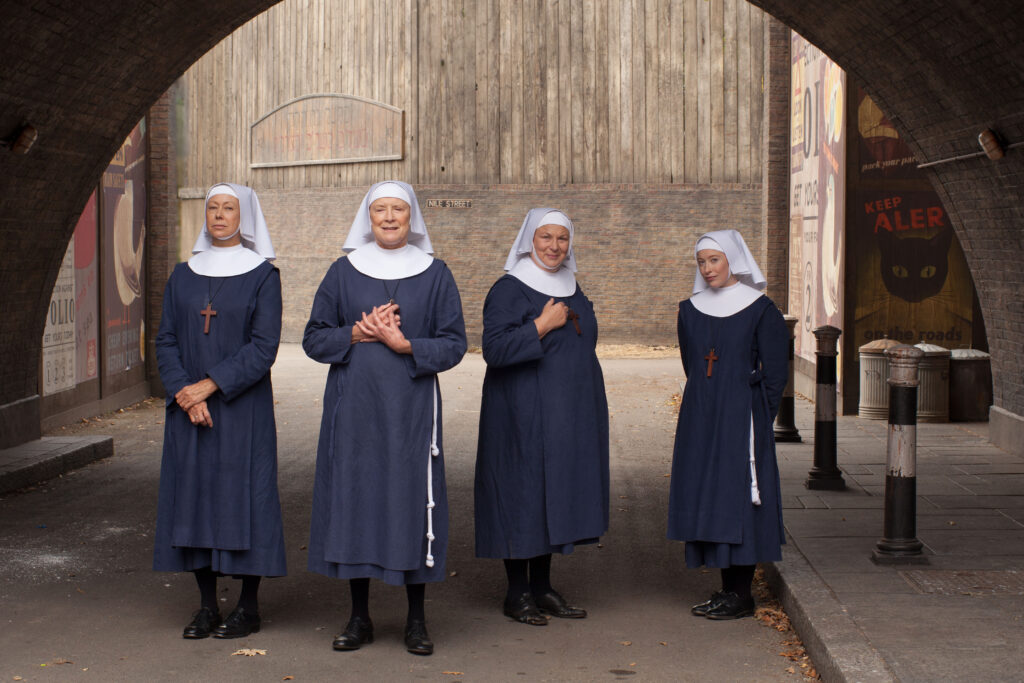
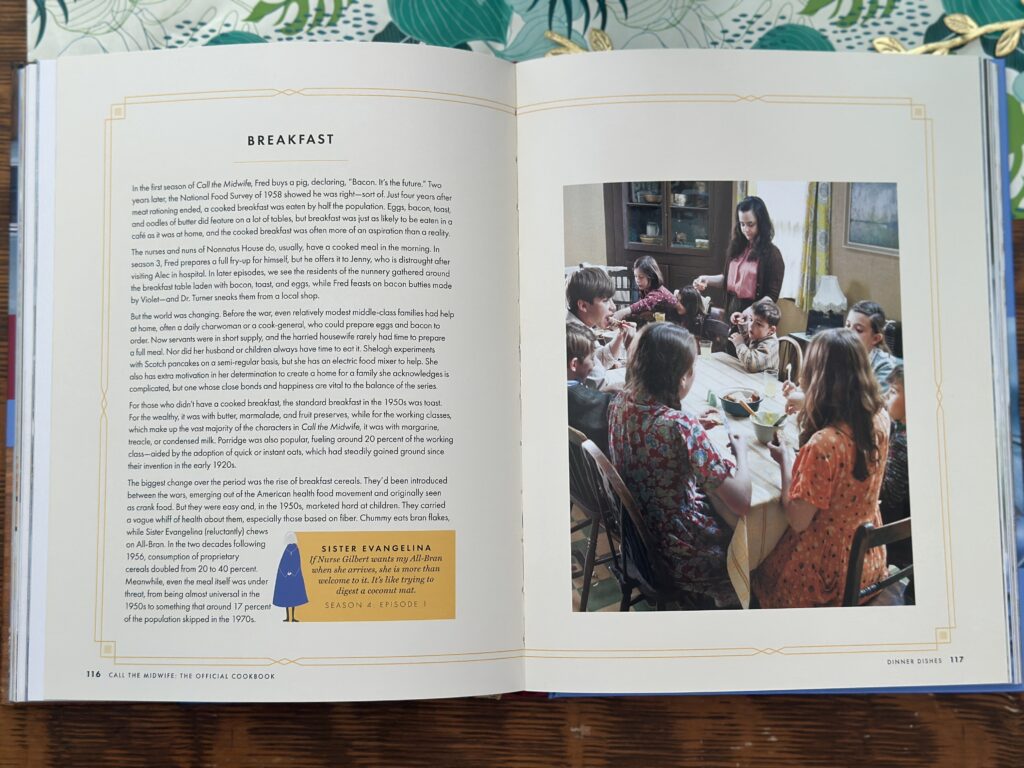
BREAKFAST
In the first season of Call the Midwife, Fred buys a pig, declaring, “Bacon. It’s the future” Tu Years later the National Food Survey of 1958 showed he was right-sort of. Just four years after meat rationing ended, a cooked breakfast was eaten by half the population. Eggs, bacon, toast, and oodles of butter did feature on a lot of tables, but breakfast was just as likely to be eaten in a café as it was at home, and the cooked breakfast was often more of an aspiration than a reality.
The nurses and nuns of Nonnatus House do, usually, have a cooked meal in the morning. In season 3, Fred prepares a full fry-up for himself, but he offers it to Jenny, who is distraught offer visiting Alec in hospital. In later episodes, we see the residents of the nunnery gathered around the breakfast table laden with bacon, toast, and eggs, while Fred feasts on bacon butties made by Violet-and Dr. Turner sneaks them from a local shop.
But the world was changing. Before the war, even relatively modest middle-class families had help at home, often a daily charwoman or a cook-general, who could prepare eggs and bacon to order. Now servants were in short supply, and the harried housewife rarely had time to prepare a full meal. Nor did her husband or children always have time to eat it. Shelagh experiments with Scotch pancakes on a semi-regular basis, but she has an electric food mixer to help. She also has extra motivation in her determination to create a home for a family she acknowledges is complicated, but one whose close bonds and happiness are vital to the balance of the series.
For those who didn’t have a cooked breakfast, the standard breakfast in the 1950s was toast.
For the wealthy, it was with butter, marmalade, and fruit preserves, while for the working classes, which make up the vast majority of the characters in Call the Midwife, it was with margarine, treacle, or condensed milk. Porridge was also popular, fueling around 20 percent of the working class-aided by the adoption of quick or instant oats, which had steadily gained ground since their invention in the early 1920s.
The biggest change over the period was the rise of breakfast cereals. They’d been introduced between the wars, emerging out of the American health food movement and originally seen as crank food. But they were easy and, in the 1950s, marketed hard at children. They carried a vague whiff of health about them, especially those based on fiber. Chummy eats bran flakes, while Sister Evangelina (reluctantly) chews on All-Bran. In the two decades following 1956, consumption of proprietary cereals doubled from 20 to 40 percent.
Meanwhile, even the meal itself was under threat, from being almost universal in the 1950s to something that around 17 percent of the population skipped in the 1970s.
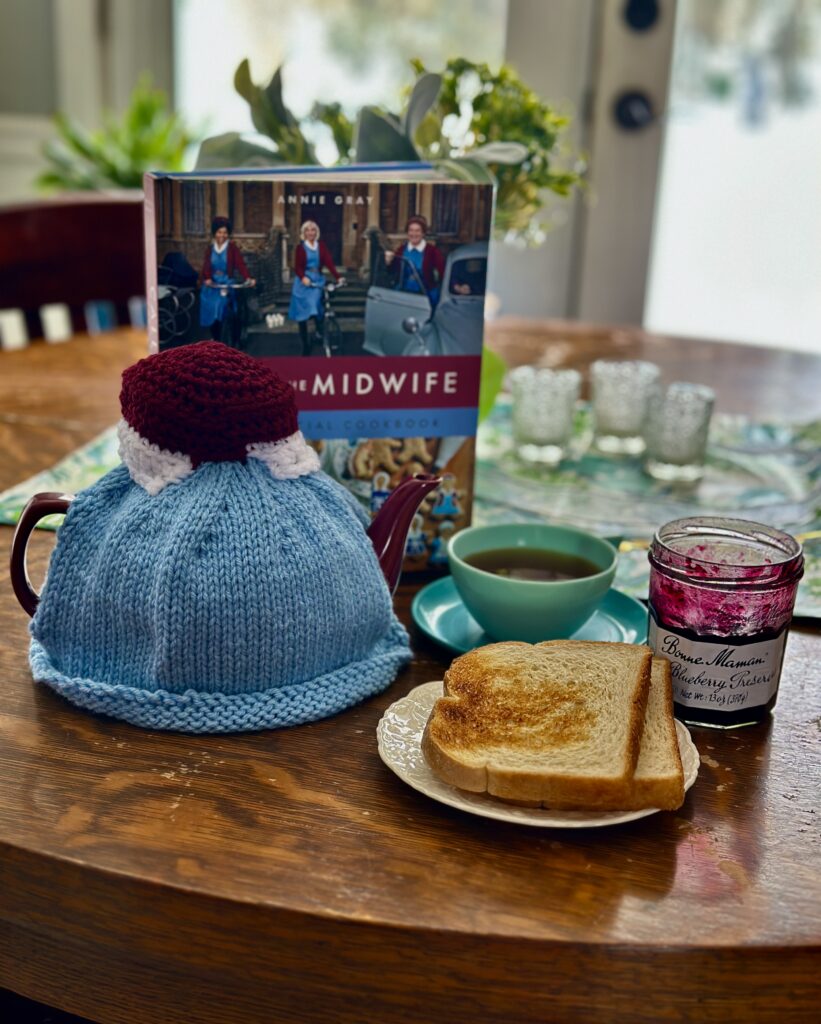
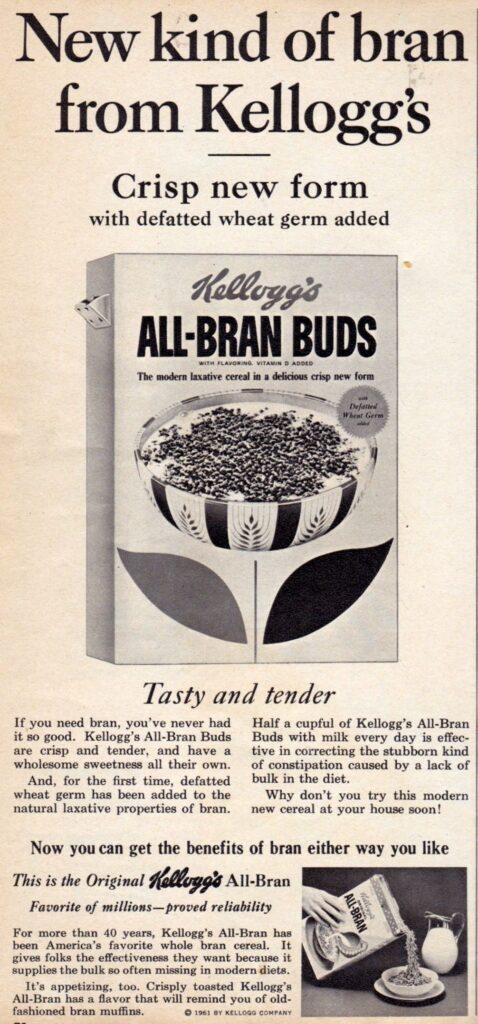
SISTER EVANGELINA:
If Nurse Gilbert wants my All-Bran when she arrives, she is more than welcome to it. It’s like trying to digest a coconut mat.
SEASON 4: EPISODE I
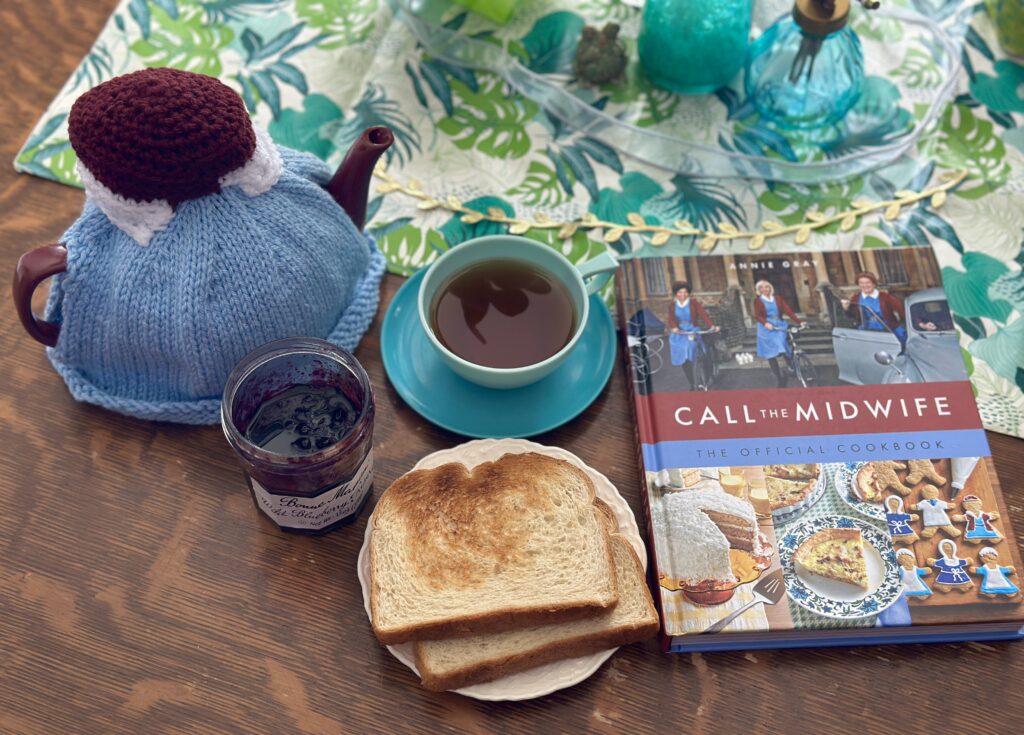
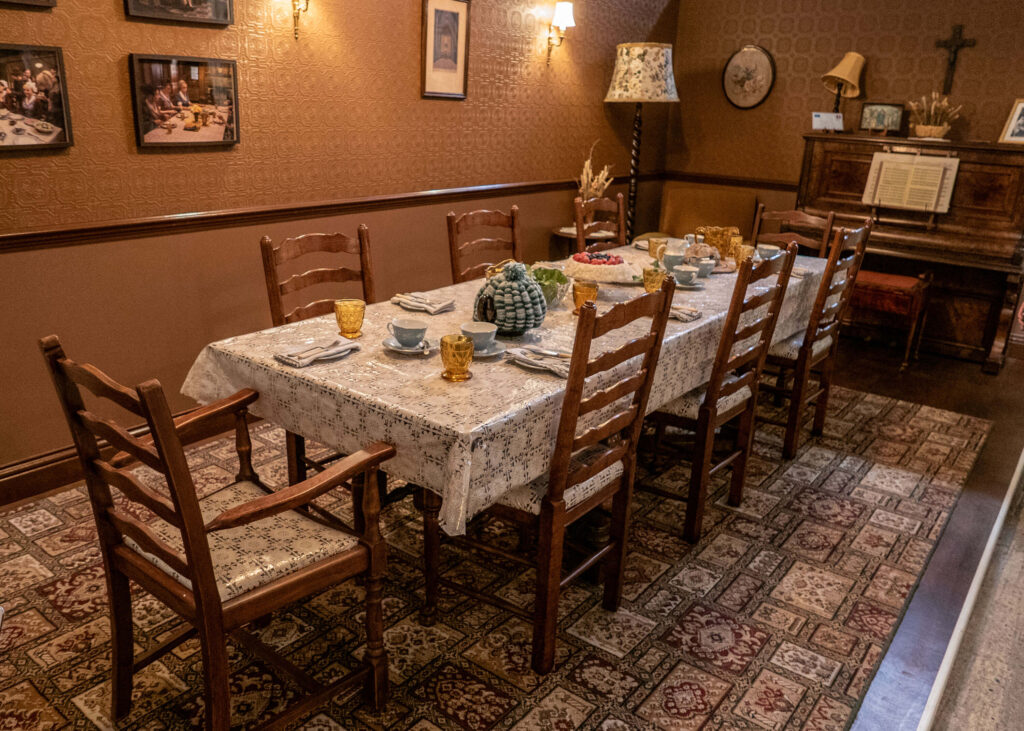
I never have had toast and tea for breakfast until today! At summer camp we had porridge or oatmeal and apple juice for breakfast and milk most days. At home cereal in my younger days but once I hit middle school I didn’t eat breakfast which continued into my twenties. Finally in my late 30s with a late pregnancy I started eating breakfast every day….
Rewatching Call The Midwife and trying to pay attention to the tea times and the food and what is on the dining room table has been so very much fun! I am very much enjoying it!
Happy Monday!

